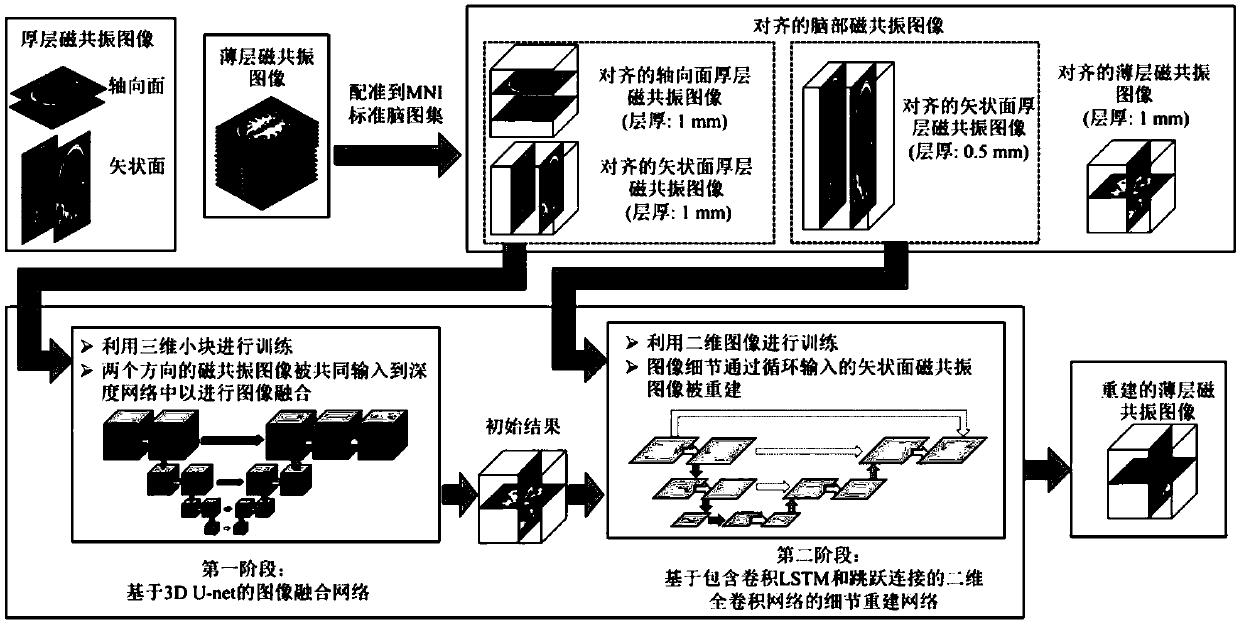Thin layer magnetic resonance image reconstruction method based on deep learning
A magnetic resonance image and deep learning technology, which is applied in the generation of 2D images, image data processing, instruments, etc., can solve the problem that magnetic resonance images are difficult to achieve voxel-to-voxel registration, etc., and achieve good structure and details. Effect
- Summary
- Abstract
- Description
- Claims
- Application Information
AI Technical Summary
Problems solved by technology
Method used
Image
Examples
Embodiment 1
[0042] In the embodiment, a method for reconstructing thin-slice magnetic resonance images based on deep learning is proposed, which is represented by DeepVolume, such as figure 1 As shown, the specific steps are as follows.
[0043] 1) Acquisition of thick-slice magnetic resonance images in the axial and sagittal planes of the brain;
[0044] When collecting thick-slice magnetic resonance images, the pulse sequence of thick-slice axial plane magnetic resonance images is T1flair, the imaging plane is the axial plane, the sum of slice thickness and interslice distance is 6.5 mm, the number of slices is 19, and the pixel width is 0.47×0.47 mm, the repetition time is 2291ms, the echo time is 25mm, and the reversal time is 750ms. Thick-slice sagittal plane magnetic resonance image pulse sequence is T1flair, the imaging plane is the axial plane, the sum of slice thickness and slice distance is 6.5mm, the number of slices is 19, the pixel width is 0.47×0.47mm, and the repetition ti...
PUM
 Login to View More
Login to View More Abstract
Description
Claims
Application Information
 Login to View More
Login to View More - Generate Ideas
- Intellectual Property
- Life Sciences
- Materials
- Tech Scout
- Unparalleled Data Quality
- Higher Quality Content
- 60% Fewer Hallucinations
Browse by: Latest US Patents, China's latest patents, Technical Efficacy Thesaurus, Application Domain, Technology Topic, Popular Technical Reports.
© 2025 PatSnap. All rights reserved.Legal|Privacy policy|Modern Slavery Act Transparency Statement|Sitemap|About US| Contact US: help@patsnap.com



